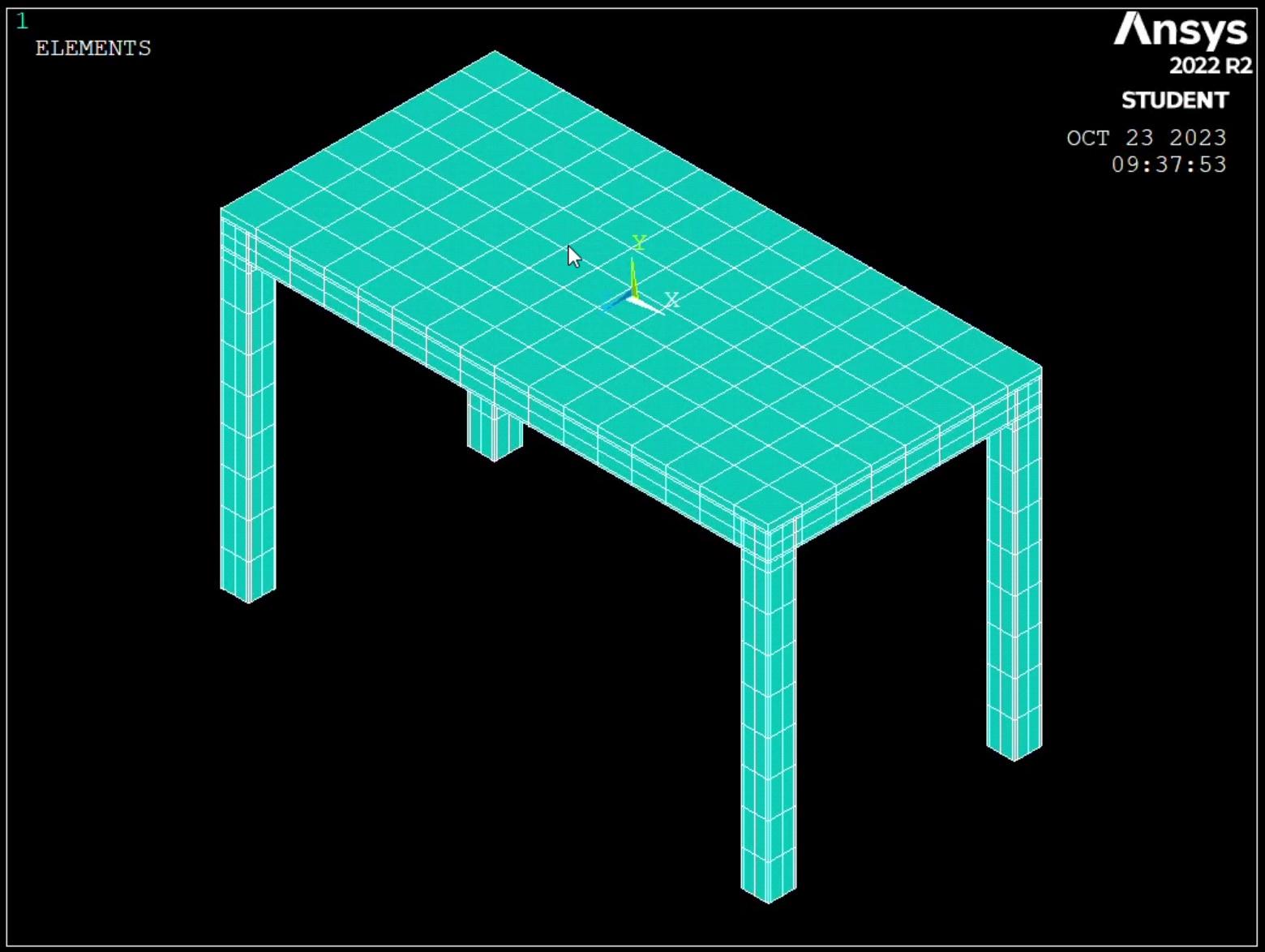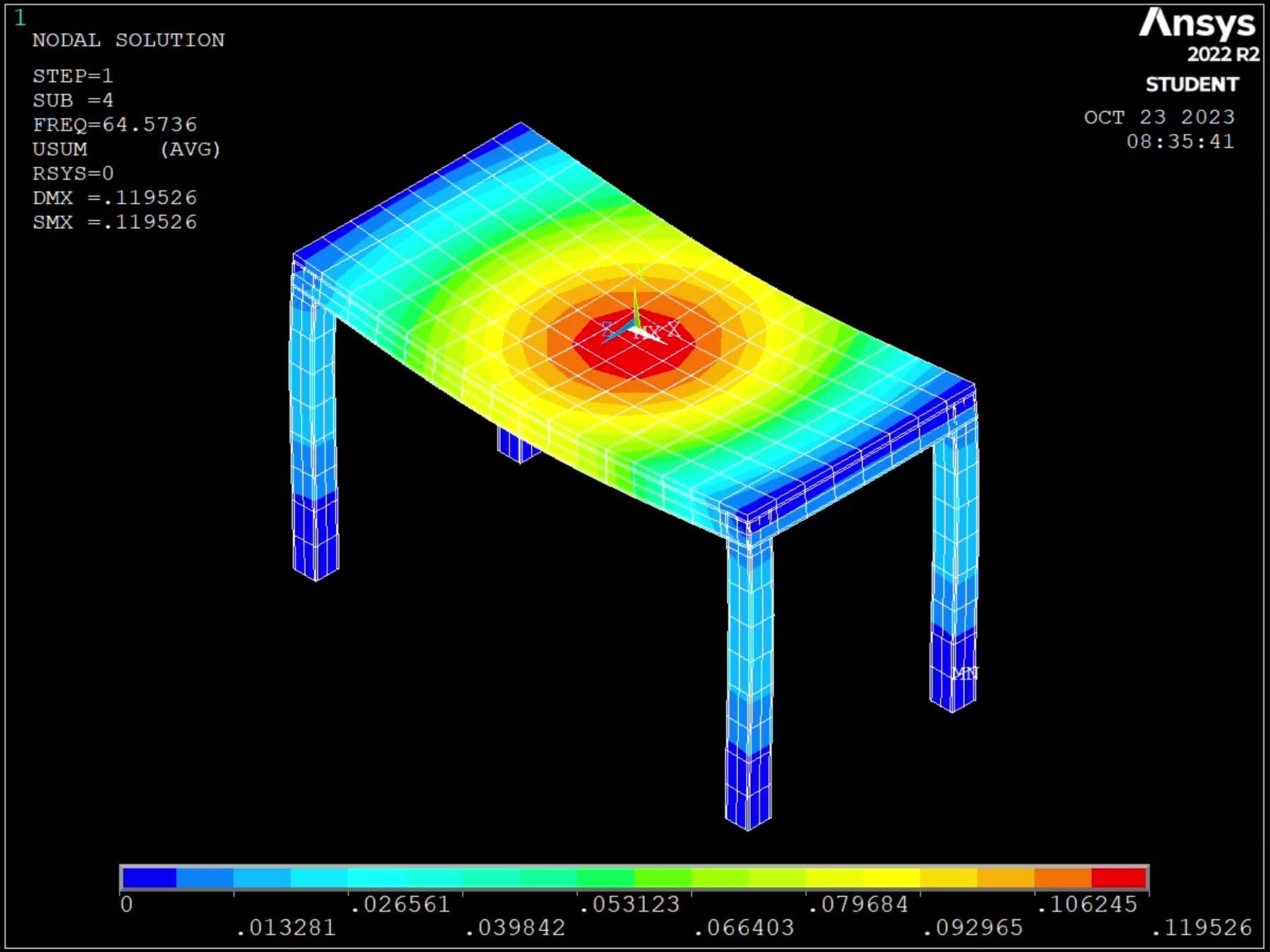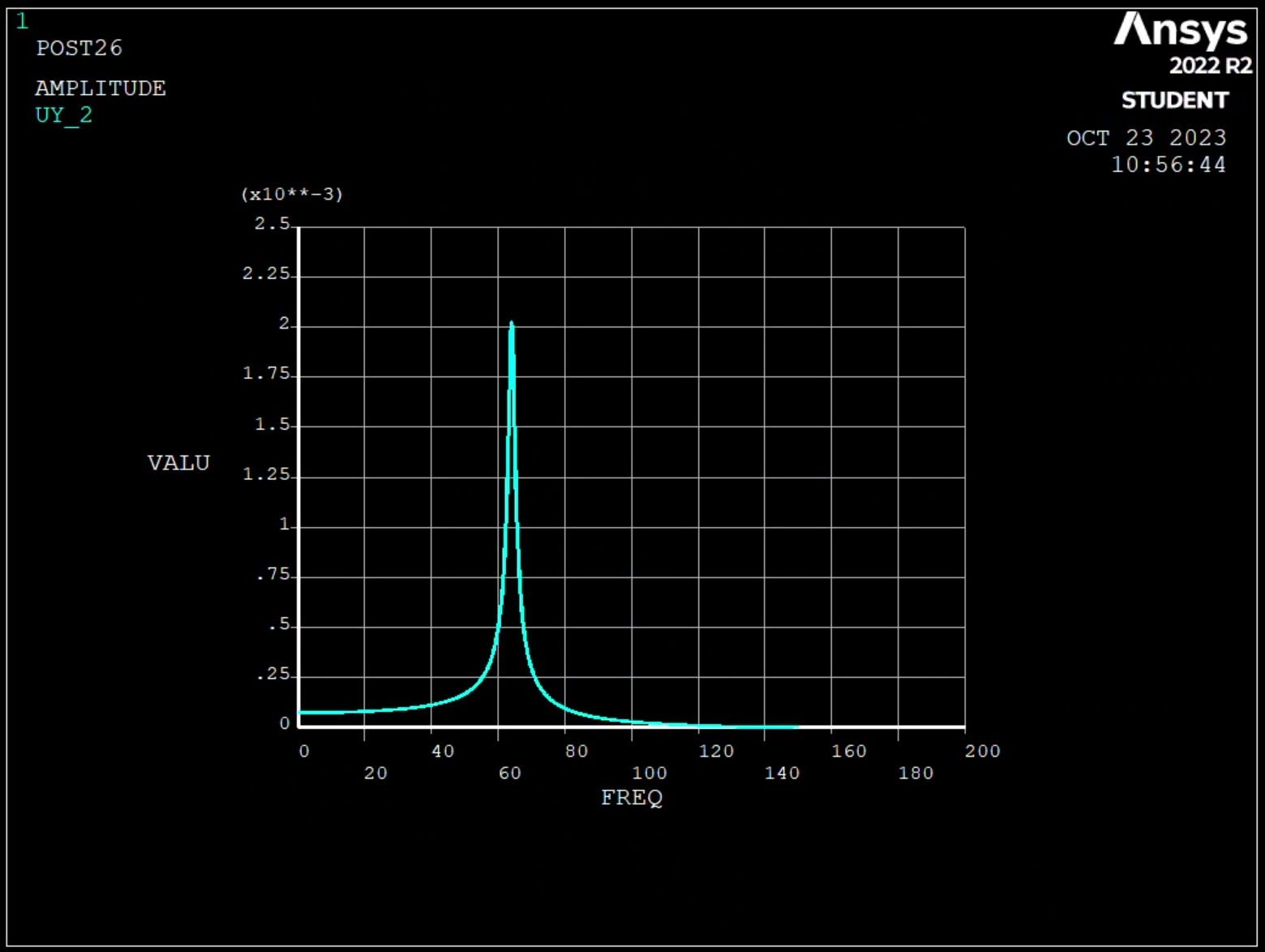Harmonic Response of a Workshop Table – ANSYS & Python
Vibratory analysis of a workshop table subjected to harmonic excitation from a hydraulic machine.
The structure was modeled using ANSYS, with post-processing and automation in Python.

Mesh Convergence
A convergence study was conducted to identify the optimal mesh size. A value of 0.03 m was retained to balance accuracy and computation time.
Modal Analysis
Seven significant modes were extracted from the first 60, based on their relevance in the [0–150 Hz] frequency range.
Strong modal displacements were observed, especially around 25 Hz, 64 Hz, and 125 Hz.


Harmonic Response
Three methods were compared:
- Full harmonic response (direct solution)
- Modal superposition
- Modal superposition on an optimized modal base
The maximum displacement at the center of the tabletop reaches approximately 2 mm.
Structural Optimization
The original steel tabletop was replaced with spruce wood, much lighter (ρ = 400 kg/m³), and its thickness was adapted.
This change significantly reduces the total mass without compromising vibratory performance.